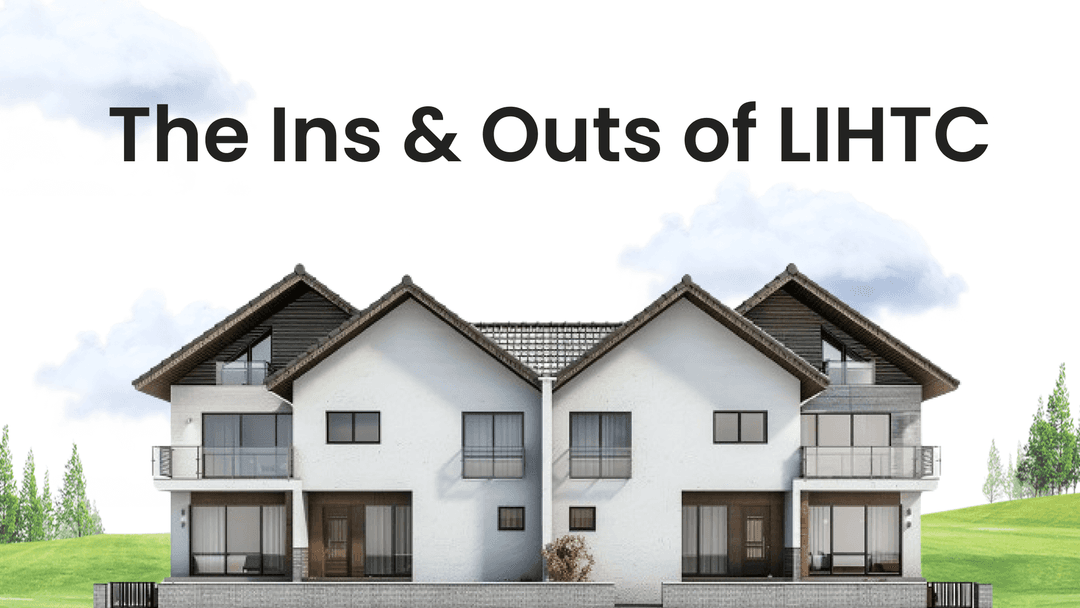Blogs| Everything You Need to Know About the LIHTC Program
Written by

Priya Gupta
Published
Feb 21, 2025
Topics
Featured

LIHTC is a federal tax credit that encourages the development, rehabilitation, and acquisition of rental homes developed for low-income tenants. Created in the Tax Reform Act of 1986, the LIHTC program uses private sector investment to help meet the need for decent, safe, and sanitary housing for those who cannot afford it today.
Local and state organizations receive $9 billion in tax credits annually, which help reduce the federal tax dollar-for-dollar. The credit these organizations receive depends on the number of low-income housing units developed under the eligibility criteria. LIHTC developers should maintain affordable housing for at least fifteen years.
It uses private sector investments to help meet the need for decent, safe, and sanitary housing for those who cannot afford it.
This period is denoted for compliance purposes. Rent is restricted according to a fraction of the Area Median Income (AMI), thus limiting it for individuals with low economic status.
Check out our comprehensive blog that will simplify the LIHTC ecosystem and how it works.
Overall, State and federal agencies recognize its significance as a key pillar in affordable housing policy and will maintain support for the LIHTC program. Ultimately, the LIHTC program has created or refurnished millions of low-cost homes and remains an essential tool for combating the U.S. housing crisis.
The U.S. Department of Housing and Urban Development (HUD) reported that 3.65 million LIHTC units were put into service between 1987 and 2022. The HUD database contains data on the total number of units by property, their addresses, bedroom count by unit, year of credit allocation, the type of property, and the type of credit allocated to each property.
Bonus Tip: When the shortage of low-cost housing in America is being debated, the LIHTC and affordable home programs are always mixed up because of the identification and definition.
Renting houses from the affordable housing program is cheap and guaranteed as long as you are a tenant whose rent consumes 30% or more of your income.
On the other hand, the LIHTC focuses on making low-cost rental units available for tenants with below-mean area incomes, according to AMI.
Get the Latest in LIHTC Right Here!.

The low-income housing tax credit was created in 1986 by the Tax Reform Act so that private investors could be encouraged to invest in affordable rental housing.
Below are some major dates in the history of the LIHTC revolution –
The Low-Income Housing Tax Credit (LIHTC) program has two primary types of credits, the 4 percent and 9 percent credits, that have different purposes depending on the project requirements and parameters.
For more information on the difference between 4% and 9% LIHTC credit, refer to our blog post, which analyzes the subject in terms of specific utilization in affordable housing projects.
These are homeownership units, including single-family, duplex, apartment complexes, and townhouses that meet the LIHTC criteria.
Property owners, investors, developers, and other stakeholders must meet certain criteria regarding the income level of tenants and the number of low-rated housing units offered.
Here are the key criteria:
A project must meet one of the following three income tests:
Each housing project tllocated with LIHTC at na ascent stage should adhere to one of these income conditions within 15 years, lest the tax credit we reversed as an act of not complying with such conditions.
For more information on how LIHTC works, including rules that must be adhered to and who qualifies for the program, you can refer to our blog, An Overview of Eligibility for Tax Credit Financing and How to Apply for LIHTC. This blog provides comprehensive insights into the requirements and steps involved in qualifying for the LIHTC program.
Private investments have made possible the development of affordable housing in the country via LIHTC, which has seen millions of modest homes built. Furthermore, such initiatives have allowed local businesses to establish themselves, resulting in more employment.
Besides, distressed neighborhoods experience revitalization courtesy of LIHTC projects, which lead to improved infrastructure and better community well-being.
You can explore our blog on the benefits of LIHTC and learn more about its impact on communities.
The LIHTC program has been successful. But there are some obstacles it faces for it to work properly.
For example, the developers may find it difficult because some form of compliance is required, which is very complex because of the troublesome documentation process.
Moreover, some people wonder if LIHTC houses will remain affordable over time since some could end up being expensive, considering that they are meant for low-income individuals and are required to remain so for at least 15 years in order to comply.
Please read our blog for a comprehensive understanding of the challenges and criticisms of the LIHTC program.
Key Takeaways
For millions of families and individuals falling into the low-income bracket and looking for affordable houses to live and thrive, the LIHTC initiatives are the primary source of solving the housing crisis in the United States.
It has grown to be the country’s largest affordable housing program, working to encourage the production and preservation of quality rental housing for low-income tenants by providing substantial tax credits to developers who adapt, construct, or rehabilitate properties for occupancy by eligible tenants with low income.
Technology advancements are simplifying the management of LIHTC properties. Software applications such as Fusion are making huge impacts in the industry by helping developers and property managers streamline compliance and administrative processes. In addition to these reporting and management tasks, such LIHTC software solutions also make it convenient for stakeholders to comply with LIHTC rules by easing the process of income certification, document management, and property operations.